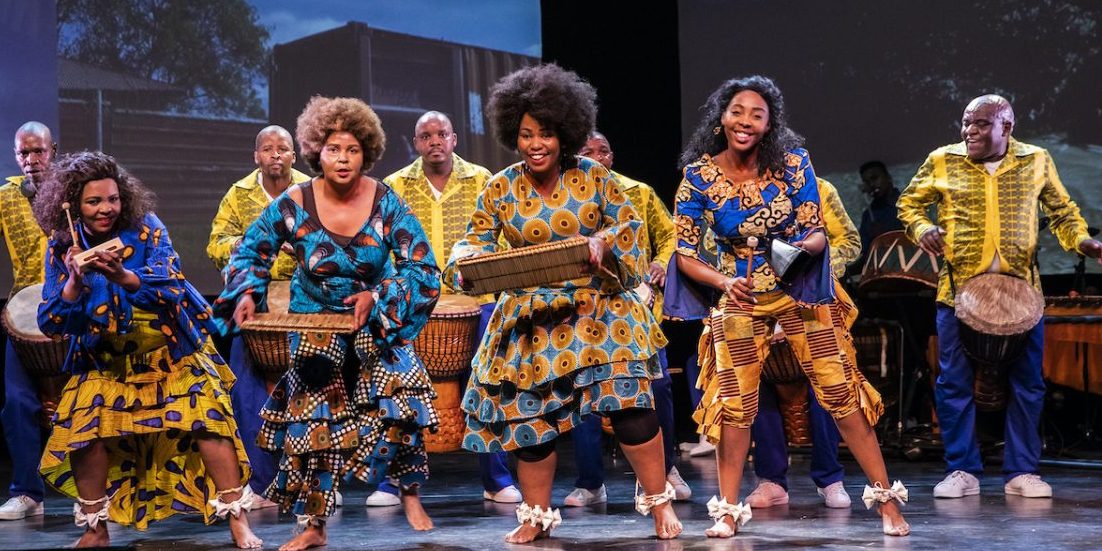Through the medium of the ‘Graceland’ album and the international fame of Ladysmith Black Mambazo we think we are familiar with the sound world of South African ‘a capella’ song and dance. But this short and rewarding residency at the Peacock Theatre by the Khayelitsha United Mambazo Choir and four female Xhosa singers reveals many further layers of fascinatingly complexity in this rich musical tradition.
This is music based on the Zulu musical tradition named ‘Isicathamiya’ which translates as ‘walking softly.’ And indeed that is how we first get to see and hear the company as they shuffle in from behind large video screens with soft yet precise rhythms. What follows is a fascinating exposition of the cultural expressions of the townships around Cape Town intercut with evocative video footage and interviews with the performers which provide us with insights into their backstories and musical formation, and also to the sources, themes and conventions of the individual compositions.
What emerges is a much richer picture than we are familiar with. There is a broader emotional range, a wider spectrum of textures and timbres than we might expect from the familiar highlights of Ladysmith Black Mambazo, especially through the dynamic and sonic contrasts between the complex male contrapuntal singing and the four female voices, used in solo or group combinations with the choir. For example, the unique ‘clicks’ of the Xhosa language themselves became a part of the rhythmic dynamic, and indeed the focus of one whole song.
The singers are all at the top of their vocal games and also participate fully in the often quite elaborate choreography. We are made fully aware of the deep roots this music has in Christian worship and celebration of community identity as well as commemoration of individual loss and grief. The two-way relationship between musical creation and the pains and joys of township life is amply demonstrated.
Production values have been carefully considered in every number – there are several changes of costume varying from colourful modern print patterns through to traditional dress, and the background videos are blended with mood of each piece – gritty sequences in the townships alternating with impressive views of mountain ranges and the veld. Over and above the often touching interview clips, several members of the ensemble engage directly with the audience so that we feel we begin to know them as individuals as well as a collective.
The instrumental backcloth of these performances is particularly impressive. Much of the accompaniment is provided by two marimba players, who do far more than underscore the vocal lines with harmonic depth. One player in particular, Mkokeli Moses Masala (Kim), offered virtuosic solo cadenzas which demonstrated a range of emotional complexity and percussive power that was astonishing. In addition other performers added particular inflections through a range of percussion instruments, and Lungiswa Plaatjies accompanied her own ethereal singing with on a unique kind of thumb piano.
My only minor grumble is that while text was available onscreen for the interviews, it seems odd that surtitles were not provided for the texts of the individual numbers. However, this is a minor cavil in a joyous evening of rare skill and panache, carefully earthed in the real lives of the hugely talented performers by a creative team that has considered how best to present their work in the round.

